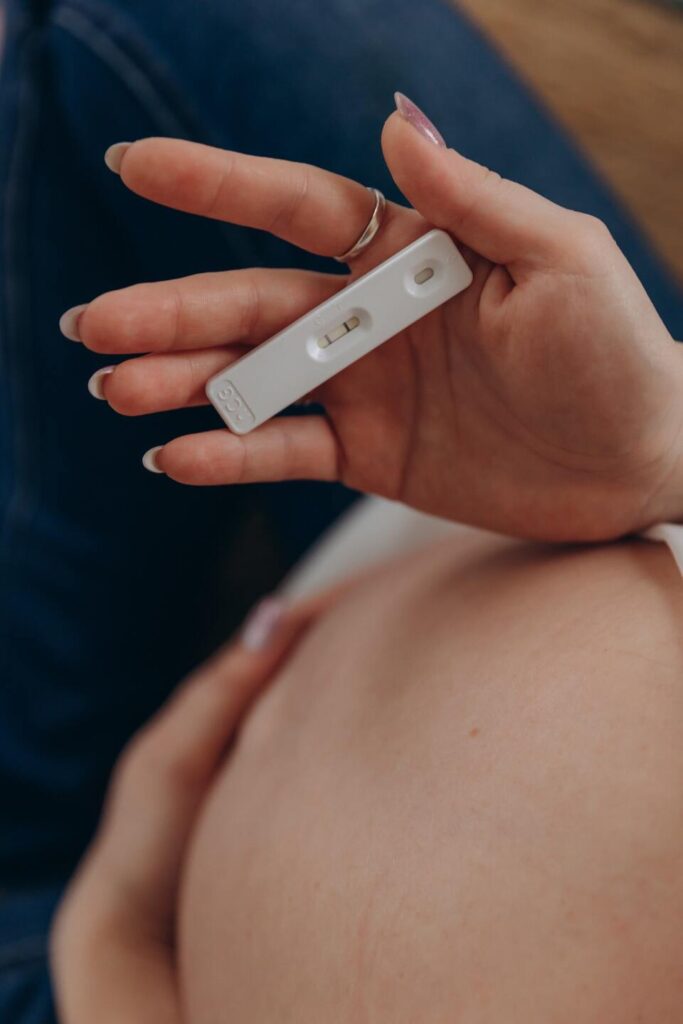- The phenomenon in which the egg implants in the uterine wall is called implantation. During the process of implantation, some women experience implantation cramping.
- Implantation cramps are often accompanied with other common and early symptoms of pregnancy, like implantation bleeding, nausea, bloating, morning sickness, fatigue, and breast tenderness.
- There are slight differences between implantation cramps and period cramps, including intensity, appearance, timing, and duration.
Whether of not they’re trying to get pregnant, women who are involved in sexual activity during their reproductive age are generally very attuned to any physical changes that may signify pregnancy. If they feel the presence of any kind of early signs of pregnancy, like food aversions, a late period, sore breasts, or strange vaginal discharge, they may decide to take a pregnancy test.
One of the most common early pregnancy symptoms is implantation cramps. But cramps are not just a sign of pregnancy, they can also be a sign that a person’s regular period is approaching. For many people, mild cramps when they’re not on their menstrual period can cause anxiety as they wait to see if they’re pregnant or simply experiencing premenstrual symptoms.
In order to understand whether you are having implantation cramps or PMS cramps, you need to know the differences between the two. This article includes everything you need to know about implantation cramps and period cramps. As always, if you are in severe pain or are experiencing heavy, unexplained vaginal bleeding, it’s a good idea to consult with your healthcare provider.
What Are Period Cramps?
Menstrual pain, which is called dysmenorrhea in medical terms, happens to about 84.1% of people who have periods. (1) Menstrual cramps are mild to severe cramps in the lower back and lower abdomen which can throb. This painful cramping is a result of uterine contractions that occur before and during menstruation as the body sheds the uterine lining. Menstrual cramps may be associated with other common period pain, including ligament pain and headaches.
These cramps are often very similar to implantation pain, which is why women misunderstand them for implantation cramps.
What Are Implantation Cramps?
When an egg is fertilized by a sperm, pregnancy begins. In a normal pregnancy, after fertilization, the cells begin to grow and multiply. The fertilized egg then travels to the uterus where it is converted into a blastocyst. The blastocyst then burrows into the lining of the uterus. The phenomenon in which the egg implants in the uterine wall is called implantation.
During the process of implantation, some women experience implantation cramping. These cramps usually occur due to the uterine contractions. (2) Not every woman feels implantation cramps; in fact, most women feel no cramps at all.

Characteristics of Implantation Cramps
Although implantation cramps do not occur in every pregnancy, but people that do experience them may be able to identify them by the following characteristics: (3)
- Timing: Implantation cramps usually occur 0 to 14 days after conception, between 2 to 7 days before your period arrives.
- Feeling: Implantation cramps may feel like period cramps, but they are generally lighter in intensity. Implantation cramps may feel like mild cramping associated with light tingling, prickling, or pulling sensations.
- Location: Implantation cramps usually occur around the lower back or lower abdomen, similar to period cramps. However, sometimes they only occur on one side of the body.
- Duration: The duration of implantation cramping varies—some may only feel pain once for a short period, while others may feel intermittent bouts of pain for several days.
Other Symptoms of Pregnancy
Implantation cramps are often accompanied with other common and early symptoms of pregnancy which help to distinguish them from period cramps. Common early signs of pregnancy include: (4)
- Implantation bleeding: When a fertilized egg is implanted in the uterus, its movement can cause light bleeding or spotting.5 This bleeding or spotting is called implantation bleeding. Implantation bleeding happens about 6 to 12 days after fertilization and is completely normal—it’s not necessarily a sign of miscarriage.
- Breast tenderness: Shifts in hormonal balance during the early stages of pregnancy can cause your breasts to become tender and swollen. Breast pain is often one of the earliest signs of pregnancy.
- Nausea and vomiting: Morning sickness is one of the most common signs of pregnancy. Some people may only feel nausea during pregnancy, but sometimes the nausea may be accompanied with vomiting.
- Fatigue: Fatigue is one of the most common early pregnancy symptoms. The rise in the level of the hormone progesterone during pregnancy increases fatigue and makes pregnant women feel sleepy and exhausted.
- Increased urination: Frequent visits to the bathroom are one of the most common symptoms of pregnancy, often lasting throughout the entire pregnancy. In the first trimester of pregnancy, this is because the body begins to increase its blood supply. As the amount of fluid in the body increases, the need to urinate increases, as do blood pressure levels.
- Bloating: Pregnancy hormones may also cause bloating, stomach pains, and difficult or painful bowel movements. Menopause probiotics can help minimize the effects of shifting hormones.
What’s the Difference Between Implantation Cramps and Period Cramps?
Although the signs and symptoms of pregnancy may feel similar to those of menstruation, there are slight differences between implantation cramps and period cramps. These differences can help you recognize whether you are pregnant or is it just your period, without taking a pregnancy test or waiting to miss your period. (6) Generally, period cramps and implantation cramps differ in:
- Intensity: Implantation cramps are usually much milder in intensity compared to menstrual cramps. Menstrual cramps can be very severe and occur at regular intervals.
- Appearance: If cramps occur with bleeding, the color of implantation blood is different from the color of period blood. implantation blood is generally light pink or brownish blood. Period blood is usually bright red in color. Additionally, period blood may include clots, while implantation blood has no clots. Finally, the amount of implantation blood continuously decreases with time. On the contrary, the amount of period blood increases and decreases alternatively.
- Timing: Period cramps usually occur 1 to 2 days before your period arrives. On the other hand, implantation cramps occur 2 to 7 days before the period.
- Duration: Implantation cramps may last anywhere from a few hours to 2 or 3 days, while menstrual cramps last from 2 to 7 days.

Stay in Tune With Your Body With Happy V
It’s difficult to distinguish between implantation cramps and period cramps, but a little amount of keen observation can help you diagnose your condition properly. However, if you’re unsure whether your cramps are due to your period, pregnancy, or another medical condition, you should consult your healthcare provider.
- https://www.ncbi.nlm.nih.gov/pmc/articles/PMC3392715/
- https://www.healthline.com/health/pregnancy/implantation-cramping
- https://www.medicalnewstoday.com/articles/321456.php
- https://www.mayoclinic.org/healthy-lifestyle/getting-pregnant/in-depth/symptoms-of-pregnancy/
art-20043853 - https://americanpregnancy.org/getting-pregnant/what-is-implantation-bleeding/
- https://onlinelibrary.wiley.com/doi/abs/10.1177/0884217503261085



